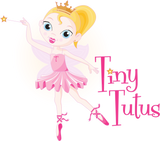What Should I Look for in a Toddler Dance Class?
What Should I Look for in a Toddler Dance Class?
When choosing a toddler dance class, look for one designed specifically for early childhood development, not just play. The best toddler dance classes are structured, age-appropriate, include real movement foundations, and welcome parents into the room.
What Makes a Good Toddler Dance Class?
Not all toddler dance classes are created equal.
Some are structured and educational. Others are more like noisy playgroups with music and glitter. If you're searching for dance classes for 2 - 4 year-olds, it's important to know what to look for and what to avoid.
Here’s what matters most:
1. Designed for Toddlers - Not Just “Scaled Down” for Them
A toddler dance class should be written for toddlers, not a junior or Tiny Toes version of a big-kid program. That means:
- Class content respects short attention spans
- Language is simple, playful, and clear
- Movements develop motor skills and introduce real technique
- Emotional development is part of the lesson
At Tiny Tutus, every part of our program is written by early childhood and ballet education experts. It’s not just cute, it’s considered.
2. Real Dance Skills, Not Just Movement Play
Look for a class that includes:
- Ballet foundations like plié, tendu, and port de bras
- Musicality and rhythm exercises
- Simple patterns to build memory and coordination
- Gentle stretching and posture awareness
Too many toddler classes rely on parachutes, beanbags, or balance beams, fun, but not dance.
At Tiny Tutus, we believe even the littlest ballerinas deserve to learn real ballet from the beginning, in a joyful, age-appropriate way.
3. Predictable Structure and Routine
Toddlers thrive on routine. A high-quality dance class will:
- Follow a familiar class structure each week
- Offer gentle transitions between activities
- Set clear expectations in a calm, loving way
This structure builds classroom confidence, emotional regulation, and a sense of safety, all while supporting dance technique.
4. Parental Presence (Not Exclusion)
Here’s where Tiny Tutus leads the industry.
We were the first Australian dance school to offer fully open classes. That means:
- Parents sit in the room (in chairs at the back)
- You can see, hear, and understand what your child is learning
- Your child feels secure knowing you’re nearby
Many studios still push the myth that “kids learn better when parents aren’t watching.” But there’s no research to support that - and plenty to challenge it.
Children learn better when they feel emotionally safe.
And nothing makes a toddler feel safer than seeing their grown-up right there with them.
5. Teacher Qualifications in Both Dance and Early Childhood
Ask who’s teaching the class and what their background is.
Great toddler dance teachers understand:
- Age-appropriate movement
- Behaviour management without shame
- The developmental milestones of 2 - 5 year-olds
- How to teach ballet with love, joy, and discipline
Tiny Tutus teachers are trained in our exclusive curriculum co-written by:
- Bronwyn Helmore – RAD-trained and former soloist with The Australian Ballet Company
- Simone Cadell – Early childhood educator, former Assistant Principal, and preschool ballet pioneer
The Tiny Tutus Difference
If you’re looking for toddler dance classes that:
- Start as early as 16 months
- Teach real ballet with joy and structure
- Welcome parents into the room
- Focus on your child’s development, not just dress-ups…
Then Tiny Tutus is your place.
We'd love to welcome you to Tiny Tutus! Book a Trial Class today or Learn More About Our Program here
